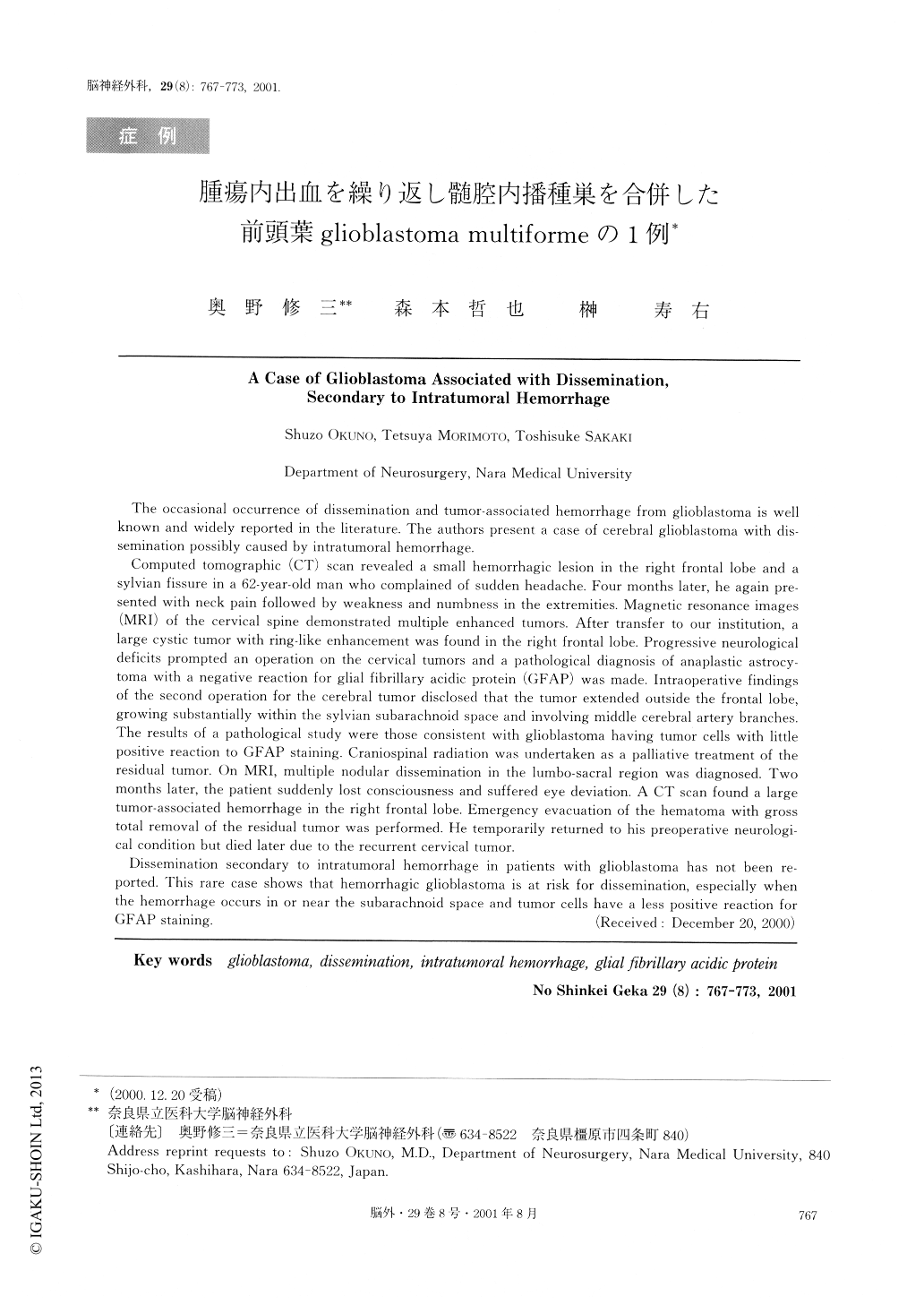Japanese
English
- 有料閲覧
- Abstract 文献概要
- 1ページ目 Look Inside
I.はじめに
Glioblastoma mtlltiforme(以下GB)は成人大脳半球に好発する悪性腫瘍であり極めて多彩な組織像を呈することで知られているが,このことは同時に臨床経過においても様々な病態を併発させると思われる.なかでも,ときに偶発する腫瘍内出血や髄腔内播種は神経症状の急激な悪化や生存期間の短縮に直接的な影響を及ぼすためGBの治療を一層困難なものにしている.今回われわれは,腫瘍内出血に続発したと思われる髄腔内播種を合併し,急峻な経過をたどったGBの1例を経験したので,文献的考察を加え報告する.
The occasional occurrence of dissemination and tumor-associated hemorrhage from glioblastoma is wellknown and widely reported in the literature. The authors present a case of cerebral glioblastoma with dis-semination possibly caused by intratumoral hemorrhage.
Computed tomographic (CT) scan revealed a small hemorrhagic lesion in the right frontal lobe and asylvian fissure in a 62-year-old man who complained of sudden headache. Four months later, he again pre-sented with neck pain followed by weakness and numbness in the extremities. Magnetic resonance images(MRI) of the cervical spine demonstrated multiple enhanced tumors. After transfer to our institution, alarge cystic tumor with ring-like enhancement was found in the right frontal lobe. Progressive neurologicaldeficits prompted an operation on the cervical tumors and a pathological diagnosis of anaplastic astrocy-toma with a negative reaction for glial fibrillary acidic protein (GFAP) was made. Intraoperative findingsof the second operation for the cerebral tumor disclosed that the tumor extended outside the frontal lobe,growing substantially within the sylvian subarachnoid space and involving middle cerebral artery branches.The results of a pathological study were those consistent with glioblastoma having tumor cells with littlepositive reaction to GFAP staining. Craniospinal radiation was undertaken as a palliative treatment of theresidual tumor. On MRI, multiple nodular dissemination in the lumbo-sacral region was diagnosed. Twomonths later, the patient suddenly lost consciousness and suffered eye deviation. A CT scan found a largetumor-associated hemorrhage in the right frontal lobe. Emergency evacuation of the hematoma with grosstotal removal of the residual tumor was performed. He temporarily returned to his preoperative neurologi-cal condition but died later clue to the recurrent cervical tumor.
Dissemination secondary to intratumoral hemorrhage in patients with glioblastoma has not been re-ported. This rare case shows that hemorrhagic glioblastoma is at risk for dissemination, especially whenthe hemorrhage occurs in or near the subarachnoid space and tumor cells have a less positive reaction forGFAP staining.

Copyright © 2001, Igaku-Shoin Ltd. All rights reserved.


